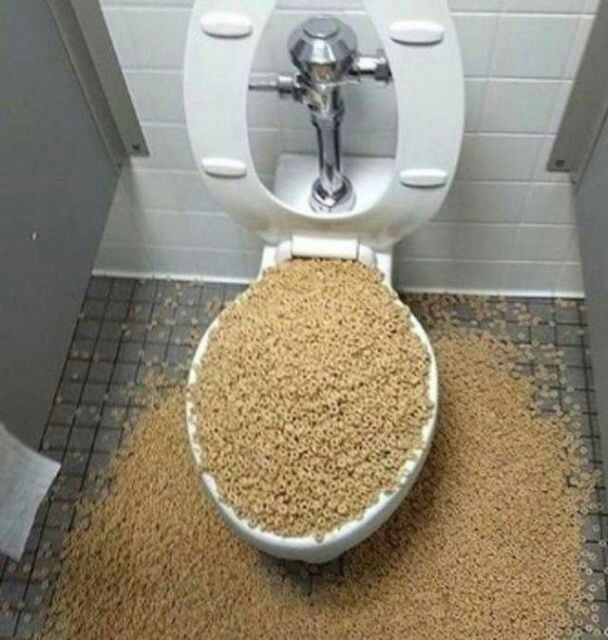Are You Permitted to Flush Food Down the Toilet?
Are You Permitted to Flush Food Down the Toilet?
Blog Article
Listed here in the next paragraphs you might get lots of quality content concerning Is it safe to flush food (especially rice) down the toilet?.

Intro
Many individuals are often faced with the issue of what to do with food waste, specifically when it involves leftovers or scraps. One usual question that arises is whether it's fine to purge food down the bathroom. In this write-up, we'll explore the reasons why individuals might take into consideration purging food, the effects of doing so, and alternate techniques for appropriate disposal.
Reasons people may think about purging food
Lack of awareness
Some people may not know the prospective harm triggered by flushing food down the commode. They might incorrectly think that it's a safe method.
Comfort
Purging food down the bathroom might look like a quick and easy solution to throwing away undesirable scraps, specifically when there's no close-by trash can available.
Idleness
Sometimes, people may simply select to flush food out of sheer laziness, without considering the consequences of their activities.
Effects of flushing food down the toilet
Ecological effect
Food waste that ends up in rivers can contribute to contamination and damage aquatic environments. Furthermore, the water made use of to flush food can stress water resources.
Pipes issues
Flushing food can lead to clogged up pipes and drains, causing costly pipes repair services and troubles.
Kinds of food that must not be flushed
Coarse foods
Foods with fibrous appearances such as celery or corn husks can obtain tangled in pipelines and cause obstructions.
Starchy foods
Starchy foods like pasta and rice can absorb water and swell, leading to obstructions in pipes.
Oils and fats
Greasy foods like bacon or food preparation oils must never ever be purged down the bathroom as they can solidify and create blockages.
Correct disposal techniques for food waste
Utilizing a garbage disposal
For homes equipped with waste disposal unit, food scraps can be ground up and purged through the plumbing system. Nevertheless, not all foods appropriate for disposal in this way.
Recycling
Particular food packaging materials can be reused, lowering waste and lessening environmental effect.
Composting
Composting is a green way to throw away food waste. Organic products can be composted and utilized to enrich dirt for gardening.
The significance of proper waste management
Reducing ecological damage
Proper waste monitoring practices, such as composting and recycling, help decrease pollution and maintain natural resources for future generations.
Safeguarding plumbing systems
By staying clear of the practice of flushing food down the bathroom, home owners can stop pricey pipes repairs and maintain the stability of their plumbing systems.
Conclusion
In conclusion, while it may be tempting to purge food down the commode for ease, it is very important to comprehend the possible repercussions of this activity. By taking on appropriate waste monitoring methods and getting rid of food waste responsibly, individuals can add to healthier pipes systems and a cleaner setting for all.
FLUSH FOOD DOWN THE TOILET?
FLUSHING FOOD CAN CAUSE BLOCKED DRAINS IN YOUR HOME
All of the plumbing fixtures in your home are connected to the same sewer pipe outside of your home. This outdoor sewer pipe is responsible for transporting all the wastewater from your home to the Council sewer mains. Even small pieces of food that go down the kitchen sink can cause problems for your sewer. It should therefore be obvious that flushing larger bits of food, such as meat, risks a clog in either the toilet itself or the sewer pipes. Flushing greasy food is even more problematic because oil coagulates when it cools, coating the interior lining of your pipes.
THE TOILET IS NOT A BIN
Food isn’t the only thing that people shouldn’t be flushing down the toilet. People use the toilet to dispose of all kinds of things such as tampons, makeup wipes, dental floss, kitty litter and even underwear. Water goes to great lengths to educate residents about the high costs and stress placed on wastewater treatment systems simply from people flushing the wrong stuff down the toilet. It costs taxpayers millions of dollars each year, and homeowners thousands in blocked drain repairs.
FLUSHING FOOD IS A WASTE OF WATER
Flushing food is a waste of our most precious resource - water. In June this year Level 1 water restrictions were introduced to protect water supply from drought conditions. Much of New South Wales continues to be affected by prolonged drought with recent figures revealing up to 97 per cent of the state remains in drought. Depending on whether you have a single or dual flush toilet, every single flush uses between five and 11 litres of water. In the current climate this is a huge amount of water to be wasting on flushing food that should be placed in the bin (or better yet, the compost).
https://www.jabplumbingsolutions.com.au/blog/can-you-flush-food-down-the-toilet

As a keen reader on Flushing Food Down the Toilet?, I thought sharing that excerpt was really helpful. Are you aware of another individual who is interested in Is it safe to flush food (especially rice) down the toilet?? Feel free to promote it. We truly appreciate your readership.
Click Here To Read More Report this page